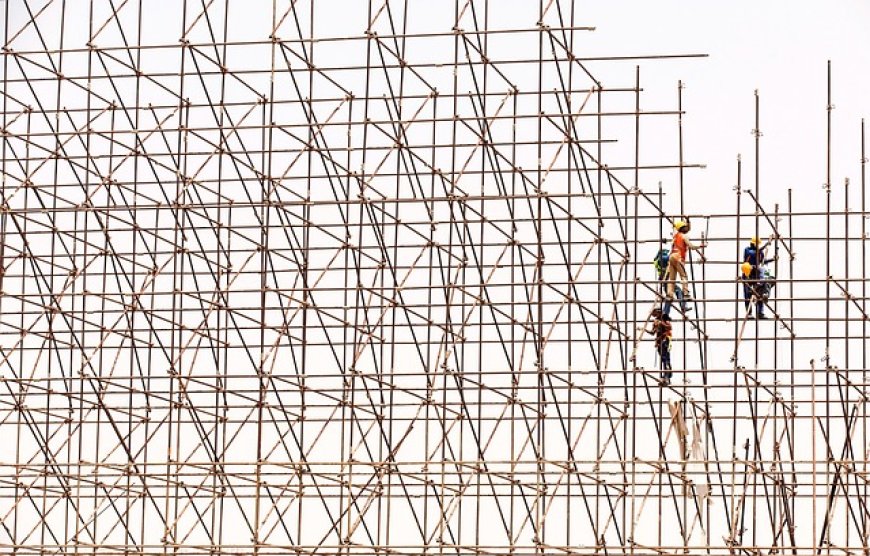Tips for safely assembling scaffolding
Tips for safely assembling scaffolding

Tips for safely assembling scaffolding:
We have prepared this great article for you with tips for safely assembling scaffolding.
Assembling scaffolding requires technical knowledge to ensure that accidents do not occur when using the equipment. Therefore, we must start by choosing a qualified professional to perform this task. Click Here for STI Course
Personal protective equipment is essential, so don't forget to use a parachute-type harness with lanyard, helmet, safety glasses, hearing protectors, leather gloves, safety boots and other equipment.
After taking the necessary precautions, assembly can begin.
How to assemble scaffolding:
The load capacity of the scaffolding must be calculated in advance, delimiting the maximum weight it will have to support. Pay attention to the levelness of the floor, as unevenness can cause accidents.
Precautions when assembling Tubular Scaffolding:
This type of scaffolding requires access via a ladder, which can meet the following specifications:
Collective Ladder: Can be internal or external, 80 cm*.
Seaman's Ladder: 80 cm*, with non-slip handrails and steps.
Metal ladder: 40 cm* wide and steps between 25 and 35 cm apart.
*Minimum centimeters
Scaffolding Assembly:
Start assembly with the shoes, which must be inserted into a sturdy floor. The Tower must remain vertical.
The panels are assembled with a diagonal lock, with a maximum spacing of 3 meters.
It is important to install the work floor, skirting board, guardrail and panels in accordance with the standards.
Adjust height according to your needs.
Assembly of Facade Scaffolding:
Facade scaffolding requires lifting, which must be done using ropes or a special system. In addition, it is important that the joints are locked using screws, clamps, cotter pins or another option that provides adequate safety.
Panels:
The panels need to be able to support the floors. In order to use them in the best possible way, we recommend locking them, which can be done with cotter pins, screws, etc.
Bracing:
The wind can destabilize scaffolding that has not been assembled correctly, which can cause serious accidents, and that is not what you want.
In order for the equipment to be used without posing risks, it is necessary to have the bracing pieces fixed directly to the uprights with screws, clamps, pins. This procedure provides the necessary stability.
Mobile Scaffolding Assembly:
Operations often require scaffolding that can be moved constantly, but without regard for safety, which is why the casters need locks.
To prevent accidents, the surface must be flat so that movement is safe.
Cantilever Scaffolding Assembly:
They are designed for outdoor use and can support up to three times their weight. To avoid instability, a system must be in place to ensure that they are fixed to the building.
Suspended Scaffolding Assembly:
For suspended scaffolding, all recommendations are described in the project. The most important thing is that the equipment guarantees the structural stability necessary for use.
Assembly begins when the sides and headboards are fixed. Then, the bottom of the platform, screws and nuts are placed with the appropriate tools.
For this model, steel cables are essential for the use of the manual winch and fall arrester.
Conclusion:
Safety when assembling scaffolding is essential. Pay attention to all details during assembly and avoid serious accidents during its operation.





































































































![Building A Digital PR Strategy: 10 Essential Steps for Beginners [With Examples]](https://buzzsumo.com/wp-content/uploads/2023/09/Building-A-Digital-PR-Strategy-10-Essential-Steps-for-Beginners-With-Examples-bblog-masthead.jpg)













![How to Use GA4 to Track Social Media Traffic: 6 Questions, Answers and Insights [VIDEO]](https://www.orbitmedia.com/wp-content/uploads/2023/06/ab-testing.png)







![Technical Sourcer [United Kingdom] at Olo](
https://nodesk.co/remote-companies/assets/logos/olo.e9c56827507b669046f71750846f8032542be84192a2248413f8421b2e5a2769.jpg
)



























